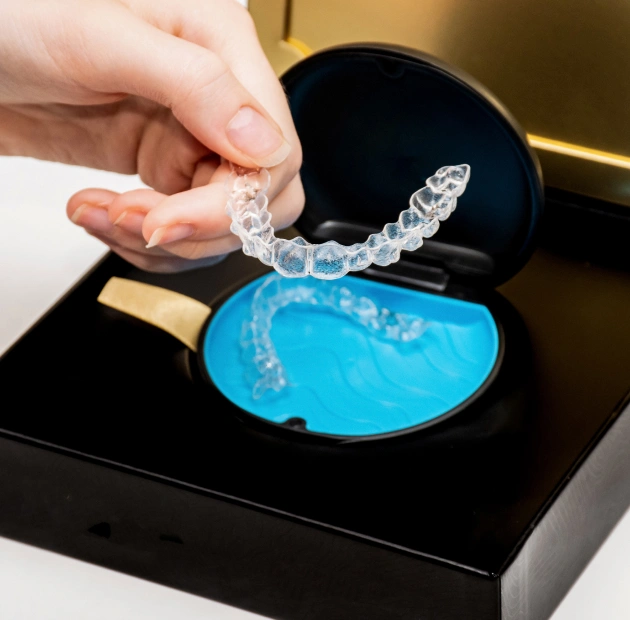Serving Short Hills, NJ

Straighten Your Smile Beautifully and Discreetly With Invisalign®
Many people are concerned about the appearance of traditional metal braces, especially adults who may feel self-conscious about wearing them for an extended period. Invisalign® offers a nearly invisible alternative that effectively straightens teeth without any metal wires or brackets.
The Invisalign® treatment uses a series of custom-made aligners that are replaced every few weeks to gradually shift the teeth into their proper positions. These aligners are discreet, comfortable, and removable, allowing you to take them out for special occasions or meals. Many patients report high satisfaction with the results, enjoying both the aesthetic benefits and the convenience of Invisalign® for achieving a confident, beautiful smile.
What Bite Problems Can Invisalign® Help Correct?
Invisalign® can treat the same dental issues as traditional metal braces, but with the added benefit of being nearly invisible and removable whenever necessary.
Here are some common bite problems that can be corrected with Invisalign®:
- Overcrowding – Crowding occurs when there isn’t enough space for teeth to align properly, which can lead to tooth decay and increase the risk of gum disease.
- Large Gaps Between Teeth – Large spaces between teeth can result from missing teeth or abnormal jaw growth, affecting both appearance and oral health.
- Crossbite – A crossbite happens when one or more upper teeth bite inward against the lower teeth. This misalignment can cause uneven wear, leading to bone erosion and gum disease.
- Overbite – An overbite occurs when the upper teeth extend beyond or completely cover the lower teeth. Over time, this can cause jaw pain and may lead to temporomandibular joint (TMJ) problems.
- Underbite – The opposite of an overbite, an underbite happens when the lower teeth extend beyond or cover the upper teeth. This condition can cause jaw pain and increase the risk of TMJ issues.
Why Choose Invisalign® Over Traditional Braces and Veneers?
There are three primary methods for achieving a perfectly aligned smile: traditional braces, Invisalign® aligners, and dental veneers. Each treatment has its own advantages depending on the specific needs of the patient.
The key distinction between Invisalign® and traditional braces is that Invisalign® aligners are removable, giving patients more flexibility. However, this also requires greater discipline and commitment. Fortunately, Invisalign® trays are comfortable, discreet, and easy to wear, making it easier for patients to stick to their treatment plan. Both options can deliver comparable results.
Invisalign® often offers more benefits than veneers, as it actively straightens teeth, while veneers only improve appearance by covering the teeth. Veneers are thin, permanent coverings applied to the front of the teeth and are difficult to remove. They can be expensive, prone to damage, and typically last less than 20 years. In comparison, Invisalign® is a more practical, long-term solution for aligning teeth.
What’s Involved in the Invisalign® Treatment Process?
The Invisalign® treatment begins with creating a personalized treatment plan. Using advanced 3D digital imaging, the dentist captures detailed images of your entire jaw, allowing them to move teeth on a screen, analyze the jaw from multiple angles, and predict future changes to your facial structure. This technology helps visualize how the Invisalign® trays will improve both tooth alignment and facial aesthetics.
Once the planning is complete, a set of custom aligners is made. The number of aligners required varies from person to person but typically ranges from 20 to 29 sets per arch, depending on the complexity of the case.
What to Keep in Mind When Wearing Invisalign® Aligners
Adjusting to life with Invisalign® aligners may take a few weeks, but it’s important to wear them consistently—only removing them when eating or drinking. Removing the trays during meals is essential to prevent food from getting stuck between the aligner and your teeth, which could lead to tooth decay.
Typically, new aligners are provided every two weeks, with noticeable progress seen between appointments. Invisalign® has revolutionized orthodontics with its comfort and effectiveness, offering an appealing alternative to traditional braces.
If you have any questions about Invisalign® or its treatment process, don’t hesitate to contact our office for more information.

